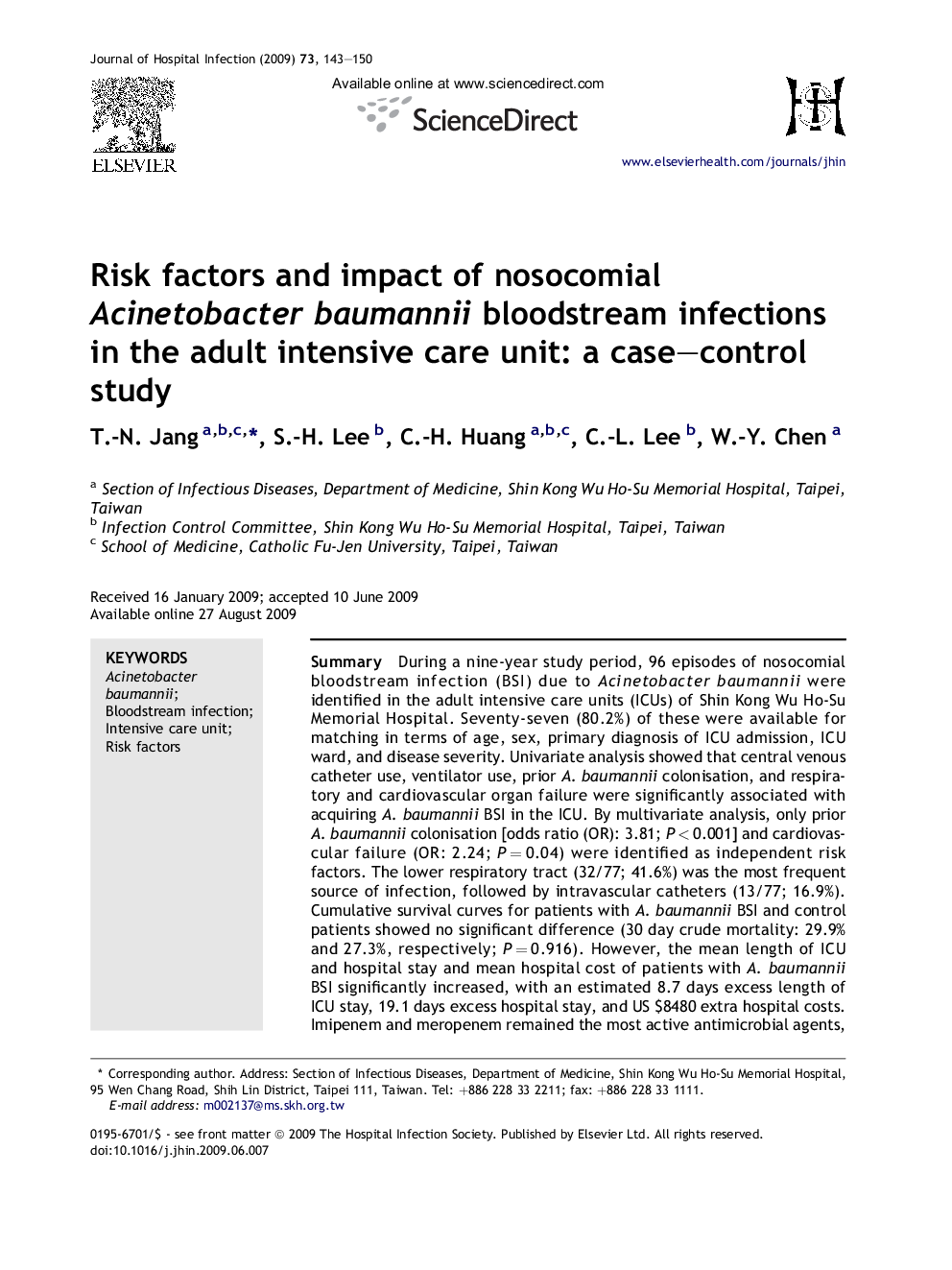| Article ID | Journal | Published Year | Pages | File Type |
|---|---|---|---|---|
| 3373091 | Journal of Hospital Infection | 2009 | 8 Pages |
SummaryDuring a nine-year study period, 96 episodes of nosocomial bloodstream infection (BSI) due to Acinetobacter baumannii were identified in the adult intensive care units (ICUs) of Shin Kong Wu Ho-Su Memorial Hospital. Seventy-seven (80.2%) of these were available for matching in terms of age, sex, primary diagnosis of ICU admission, ICU ward, and disease severity. Univariate analysis showed that central venous catheter use, ventilator use, prior A. baumannii colonisation, and respiratory and cardiovascular organ failure were significantly associated with acquiring A. baumannii BSI in the ICU. By multivariate analysis, only prior A. baumannii colonisation [odds ratio (OR): 3.81; P < 0.001] and cardiovascular failure (OR: 2.24; P = 0.04) were identified as independent risk factors. The lower respiratory tract (32/77; 41.6%) was the most frequent source of infection, followed by intravascular catheters (13/77; 16.9%). Cumulative survival curves for patients with A. baumannii BSI and control patients showed no significant difference (30 day crude mortality: 29.9% and 27.3%, respectively; P = 0.916). However, the mean length of ICU and hospital stay and mean hospital cost of patients with A. baumannii BSI significantly increased, with an estimated 8.7 days excess length of ICU stay, 19.1 days excess hospital stay, and US $8480 extra hospital costs. Imipenem and meropenem remained the most active antimicrobial agents, both with 95.5% susceptibility (MIC50 = 0.25 and 0.5, respectively). Improving hand hygiene of healthcare workers and aseptic care of vascular catheters and endotracheal tubes are important measures to prevent A. baumannii colonisation and decrease the incidence of BSI.
